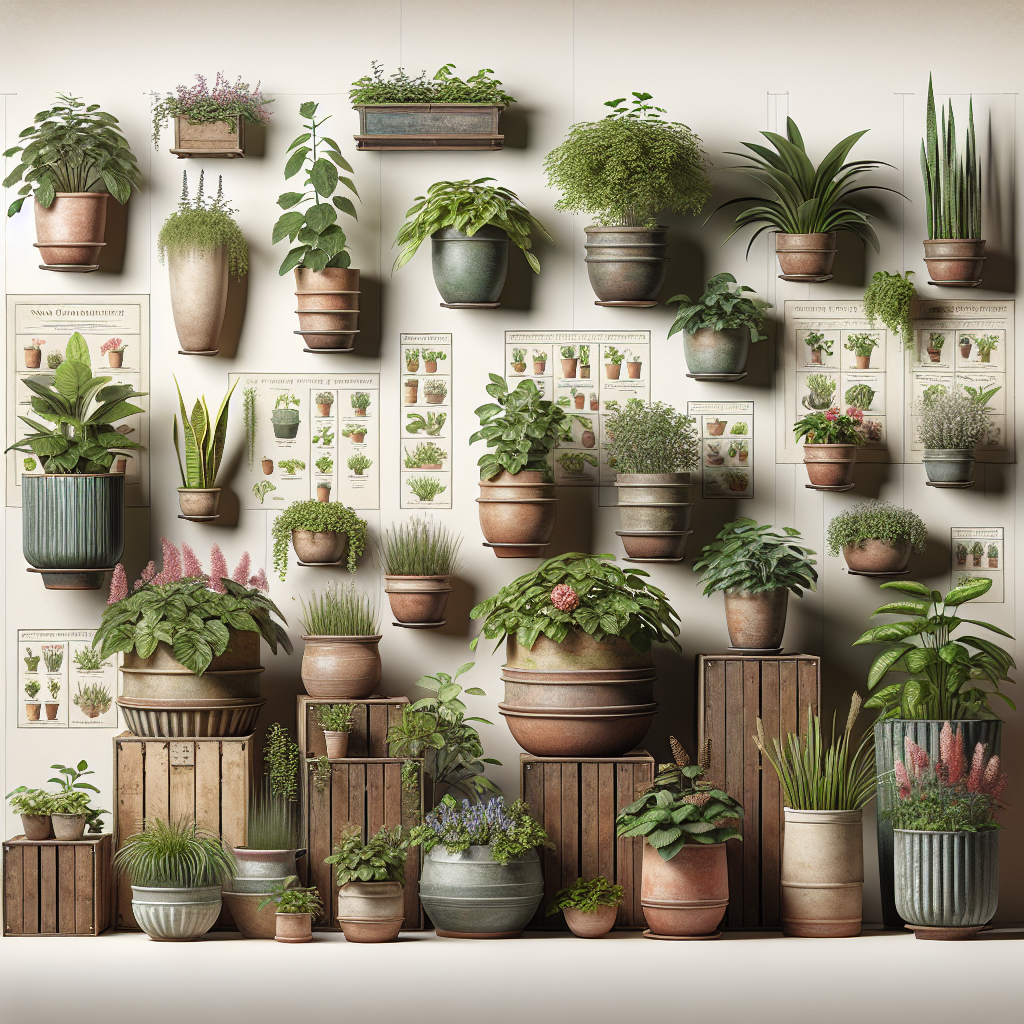# The Ultimate Guide to Successful Container Gardening
Container gardening has evolved from a niche hobby into a mainstream way for people to grow their own plants, flowers, and even vegetables. Whether you’re a seasoned horticulturist or a beginner with no prior experience, container gardening can be a rewarding and accessible endeavor. This guide will walk you through the essentials of successful container gardening, from choosing the right containers to selecting appropriate plants, soil, and maintenance practices.
## Why Choose Container Gardening?
Container gardening offers numerous benefits that make it appealing for various lifestyles:
1. **Space Efficiency**: Perfect for urban settings where garden space is limited.
2. **Flexibility**: Containers can be moved depending on sunlight conditions or seasonal changes.
3. **Accessibility**: Easier to manage for those with mobility issues as containers can be placed at comfortable heights.
4. **Control**: Greater control over soil conditions and plant health.
## Choosing the Right Containers
The first step in setting up your container garden is choosing suitable containers. Here are some factors to consider:
### Material
– **Terracotta**: Classic and breathable but tends to dry out quickly.
– **Plastic**: Lightweight and retains moisture well but can heat up in the sun.
– **Wood**: Aesthetic and insulative, though prone to rotting unless treated.
– **Metal**: Durable but can become very hot in direct sunlight.
### Size
The size of your container should match the mature size of the plant you intend to grow. Larger plants need deeper and wider containers to accommodate their root systems.
### Drainage
Good drainage is essential. Ensure that your chosen containers have sufficient drainage holes at the bottom to prevent waterlogging.
## Selecting Suitable Soil
Soil quality directly impacts plant health. Garden soil is often too dense for containers; instead, use high-quality potting mix which is lighter and drains well while retaining moisture.
### Potting Mix Components
– **Peat Moss or Coconut Coir**: Retains moisture and provides aeration.
– **Perlite or Vermiculite**: Improves drainage while retaining necessary water.
– **Compost or Slow-release Fertilizers**: Nutrient-rich components that support plant growth over time.
Make sure to opt for a mix that suits your specific plants’ needs—some might require more specialized mixes like cactus soil or seed-starting mix.
## Choosing Plants for Containers
Almost any plant can be grown in a container if you match its needs with appropriate care practices. Here are some popular choices:
### Vegetables
– Tomatoes
– Peppers
– Basil
– Lettuce
– Radishes
### Flowers
– Petunias
– Marigolds
– Geraniums
– Begonias
### Herbs
Growing herbs like rosemary, thyme, parsley, and mint is particularly fitting due to their generally small size and high yield per square foot of space.
### Fruit Trees (Dwarf Varieties)
Citrus trees like lemons, dwarf apple trees, or fig trees can flourish in large pots as long as they receive adequate light and care.
## Planting Process
1. **Prepare the Container**
– Clean thoroughly if reusing old pots.
– Lay down mesh at the bottom if drainage holes are too large.
– Fill with potting mix up to an inch below the rim of the pot.
2. **Plant Selection**
– Choose healthy seedlings or seeds from reputable sources.
– Consider light requirements—full sun plants flourish under direct sunlight for 6–8 hours daily while shade-loving varieties do well in indirect light.
3. **Planting**
– Create small depressions for seeds or transplant seedlings carefully into holes slightly larger than their root balls.
– Firmly press soil around roots ensuring no air pockets remain but avoid compaction which restricts root growth.
4. **Watering**
– Water immediately after planting until it drains out from bottom holes—a sign it’s reached all parts evenly without pooling on top surface layer causing disease proliferation risks later stages development cycles ahead!!
## Maintenance Practices for Success
Regular care ensures thriving container gardens:
1. **Watering Guidelines**
– Frequent watering is crucial given limited soil volume potential drying faster outdoors exposed climatic elements beyond control indoors under controlled environments alike situations encountered!
– Morning watering minimizes evaporation rates optimizing absorption throughout day cycles versus nighttime applications promoting fungal diseases other pathogen developments harmful foliage overall productivity yields expected otherwise achieved ideally hoped planned outcomes foreseen better still!
2.eng_text}













